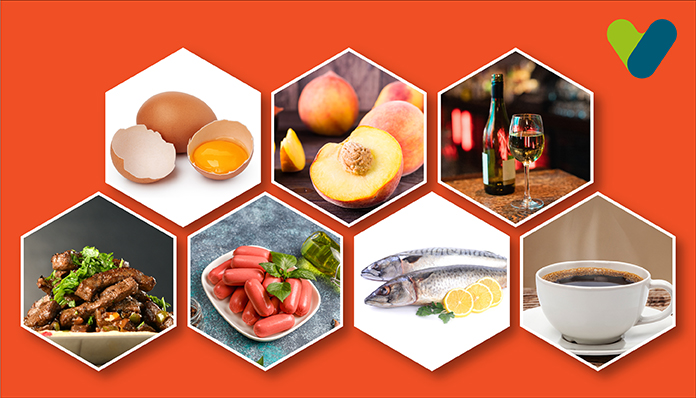Saranya (35-years-old) works in an MNC in Indore. Saranya has been married for the last 8 years. Saranya had some health issues, and that’s why she couldn’t conceive earlier. After overcoming her health issues, Saranya finally becomes pregnant after 35. Though this news brings a lot of happiness and excitement to Saranya’s life, doctors told her to be very careful, as getting pregnant at 35 is quite riskier. Saranya has started to collect all the information regarding how risky pregnancy is after 35 so that she can take better care of herself and her baby.
Let’s take a look at some of the risks that are associated with first and second pregnancy after 35.
Several studies have proved that the average age that women are conceiving their first child is currently around 28 years, which is up from 26.4 in 2015 and 26.3 in 2014. Many women prefer delayed parenthood after 35 due to some reasons. These reasons include high education, career goals, advanced methods of contraception, social and cultural shifts, and so on. Pregnancy over 35 or having the first baby after 35 is called advanced maternal age or elderly primipara or geriatric pregnancy.
Many women are delivering healthy babies at the age of 35 or above. For women, 35 is an age where certain risks could become more prominent and may affect their pregnancy. But these risks won’t affect everyone in their mid-thirties and older.
A decline in Fertility
Getting pregnant after 35 naturally may not be possible due to declining infertility. By birth, women are blessed with all the eggs they will ever have. As they grow older, the chances of getting pregnant reduce due to the waning number of remaining eggs and their reduced quality. Similarly, men also become less fertile after their thirties. These combined age-related factors may create more difficulties for women to become pregnant after 35.A study was published in the New England Journal of Medicine, and according to it women who received artificial insemination, 74 per cent of them less than 31 years old were pregnant within a year. But the number decreased to 61 per cent of individuals between the ages of 31 to 34 and is further reduced to 54 per cent of women aged 35 and over.
But these days, many advanced fertility treatments are helping women to become pregnant who earlier would have had difficulties conceiving.
Genetic Risks Associated with Pregnancy After 35
Some genetic risks are more prominent in pregnancy as women age. For example, the chances of having a baby with Down syndrome increase with maternal age.While the rate of an embryo with Down syndrome at the 10-week mark of pregnancy is 1 in 1,064 at age 25, this rises to 1 in 686 at age 30 and 1 in 240 by the age of 35 years. At the age of 40, the Down syndrome rate increases to 1 in 53, and further increases to 1 in 19 embryos at age 45.
Due to abnormal chromosome numbers, older mothers used to give birth to babies with congenital anomalies. Experts from the Albert Einstein College of Medicine of Yeshiva University in New York claimed that the genetic process of recombination is primarily responsible for the enhanced risk of conditions like Down syndrome.
Recombination is a process where chromosome pairs exchange genetic material before untying. The research team has also claimed that the recombination process is less controlled, which leads to irregular chromosome numbers in sex cells.
Higher Chances of a Miscarriage
The chances of miscarriage increase gradually as a woman grows older. A study was published in the BMJ and it is revealed that the risk of miscarriage is around 8.9 per cent for women between 20 to 24 years and increases to 74.7 per cent for women aged 45 years or above. The waning quality of women’s eggs is also responsible for the higher rates of miscarriage.Chances for a Stillbirth
Stillbirth is more common in older women. A study was published in the Canadian Medical Association Journal and it has revealed that stillbirth is nearly 1.2 to 2.23 times higher in older women.Another study was performed on 385,120 pregnant women in the United Kingdom. It is claimed that the rate of stillbirth was 4.7 per 1,000 for women aged 18 to 34, 6.1 per 1,000 between 35-40 years, and 8.1 per 1,000 for women aged 40 and over.
Stillbirth is higher in women who are carrying their first child at the age of 35 or above. But the exact reasons for the increased stillbirth rate with maternal age are not clear till now.
Chances of Pregnancy Complications
Pregnancy complications also increase with age. Women above 40 usually face most birth-related complications. Common complications like high blood pressure often occur more frequently in midlife moms. Thus, cesarean section and induction of labor are recommended to overcome these complications.A study was published at the American Stroke Association’s International Stroke Conference in 2016 and according to it; pregnant women above 40 are at greater risk of ischemic stroke, heart attack, hemorrhagic stroke, and death from cardiovascular disease.
Benefits of Pregnancy After 35 Years
There are also some benefits of getting pregnant after 35.- Older mothers are more educated and have higher incomes. This means they have stronger resources than younger mothers.
- Older moms usually live longer than younger ones
- Children of older moms are more educated, healthier, and well-behaved
Conclusion
With proper medical care and early prenatal management, many women above 35 years can successfully give birth to healthy babies. But some may need assistance and support to conceive. Women who belong to this category may feel more ready (both emotionally and financially) to accomplish all the demands of their children than younger moms.


